You have to hand it to the apologists of Modernism for their steadfastness. They’ve been trying for a century now to gain general public acceptance for their wares, and though they are nowhere closer to that goal than they were when they first started, they continue to chase the mirage with all the fervor they had on the first day. There it is, just over the parched horizon! A new world order in which not a fragment of traditional architecture remains (except in museums, under glass) imposing the wills of our fathers and grandfathers upon us!
Alain de Botton is the latest to give it a try. Here is a recent interview with him in the pages of the slavishly modernist Architectural Record. It exhibits the usual fallacies. My comments are interspersed.
Newsmaker: Alain de Botton
“Bad architecture is in the end as much a failure of psychology as of design,” [bad philosophy often more so] writes pop philosopher Alain de Botton in his heartfelt case for good building, 2006’s The Architecture of Happiness. Having grown up amid Switzerland’s clean modernism [the dead machine aesthetic is always referred to as “clean,” as if traditional is dirty–brilliant work, marketing department!] and luxuries such as underfloor heating [invented by the ancient Romans, actually–see hypocaust], the now London-based author observes that in the United Kingdom, most people associate modern building with hastily constructed postwar tower blocks [I’m afraid the flaws identified by most people run far deeper than mere hasty construction]. By contrast, the crumbling country cottage—loaded with both history and suspect plumbing [as if it’s a contradiction to have a country cottage with good plumbing!]—enjoys a powerful grip on the British psyche [as well as the psyche of other admirers], a condition that, he argues, has led to a lot of bad design. [The British psyche is not suffering from “a condition,” nor does a good thing, like the well designed traditional country cottage, necessarily lead to a bad thing, like the badly designed country cottage. That bad fruit is falling from a different tree, Mr. de Botton, namely our throw-away culture which is a natural product of modernism‘s sentimental nihilism.]
After The Architecture of Happiness came out, de Botton decided that building would prove more effective than books. To promote the value of modernism to an often-skeptical [rightly so] British populace—and bring high design [*cough*] beyond the realm of the rich [actually, Modernism has a sad history of imposing its hopeless vision on the poor–see Pruitt-Igoe, among many others]—he formed the UK-based nonprofit Living Architecture, which launched in May. (De Botton serves as creative director.) With a mission to give the public a way to live and sleep in exceptionally designed spaces, the project commissions top-notch architects [modern traditional architects not invited, of course] to build modern[ist] vacation homes and rents them to the public [at least this time it’s optional!].
Of the five initial designs, one of the first—opening in October—is the Balancing Barn, a cantilevered house by the Dutch firm MVRDV that appears to hover atop a Suffolk hill.

Balancing Bar, MVRDV [Little girl placed precisely where she will surely never be found–a most unpleasant place to be. Deadly rendering.]
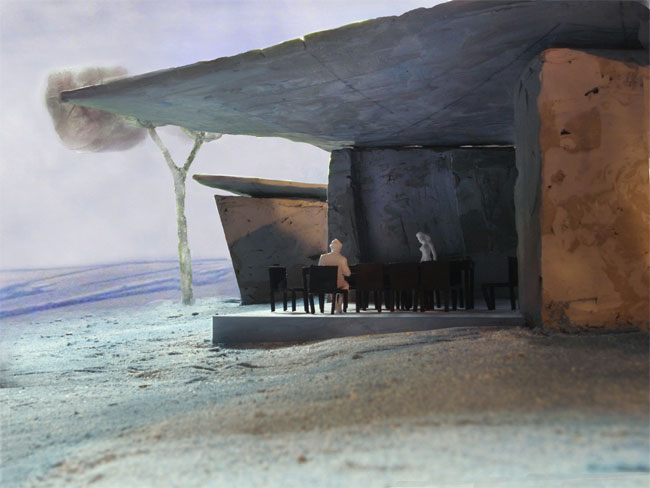
Secular Retreat, Peter Zumthor [Is this sub-standard model not missing a glass wall or two? Many architects continue to convince themselves that the glass wall “disappears.” In fact, few features draw more attention to themselves than the glass wall. A tranquil monastery is the furthest thing from my mind looking at this.]
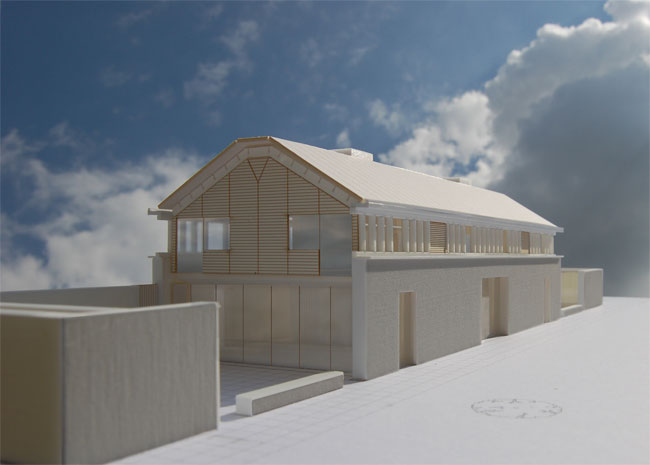
Long House, Hopkins Architecture [Could be worse. Still, one senses the vernacular getting undermined here with the ironic treatment of walls and windows.]
With prices that begin at £20 per person per night and a plan to add one new house a year, bit by bit de Botton hopes to send a nation of vacationers to architectural rehab. [The elitism of which traditionalists are usually accused is here on full display. Most folks would rather see the profession in architectural rehab.]
Lamar Clarkson: What exactly is the hold that quaint old architecture has on the British imagination? [Clarkson evidently looks down on us provincials from the same vantage point as de Botton]
Alain de Botton: It has a pretty strong hold, paradoxically because Britain is so modern. It industrialized very quickly, uprooting millions of people from their traditional ways of life, and it created an immense nostalgia that is expressed in part through architecture—a nostalgia for a rural, class-based society, where things were settled, where there were not so many outsiders. [This is an incredibly mean statement to make about the very people de Botton hopes to bring willingly over to his side. First off, a sick man who dreams of recovering his former health is not to be dismissed as nostalgic. Is it a good thing to be uprooted? I don’t think so. Second, de Botton’s mention of “outsiders” here suggests that the real reason people don’t like Modernism is that they are racists. An unbelievable calumny! And it’s quite beside the point. Has it occurred to de Botton that one of the reasons people want to immigrate to Britain is precisely because they admire things like the traditional country cottage? Finally, there’s the point about the class-based society. Who said Marxism was dead? The fall of the Berlin Wall was not enough to kill it in the architectural academy.]
LC: How do you see the public’s current relationship to modern architecture?
AdB: It’s divided. Twenty years ago one could generalize and say it was almost uniformly hostile. Modern architecture was seen as a foreign growth [again with the canard of xenophobia] that had taken root in the UK. That situation has changed partly, but it is still a relatively metropolitan experience. It’s very centered around London and a certain socioeconomic class [Marxist fallacy–the Prince of Wales led all classes in opposition to Richard Rogers’s modernist Chelsea Barracks development, for example], and when you look at [the nostalgia-heavy housing] the big property developers are building, it remains tragicomic, as if modernism never happened. [Actually, it’s not that it never happened, it’s that it was a mistake, and sane people don’t repeat their mistakes.]
LC: What is it about living in a modern building that you hope will change people’s minds, in a way that just looking at one has failed? [Newsflash: Most people have spent more than enough time inside modernist buildings to know they’re just as unpleasant on the inside as they are on the outside.]
AdB: It’s partly to do with how much time you can spend in a space. Time is often a neglected dimension in our understanding of architecture and indeed of art. Generally we have a very intellectual approach to aesthetics in the modern Western world. We imagine that you can get what there is to understand quite quickly so you don’t need to hang around. You go to a museum you look at the picture 10 minutes max, and then you’ve got it. Some of these aesthetic experiences need to be taken in bit by bit over a longer period. This is not like a book that you need to read; it’s a full sensory experience, and as with many sensory experiences you need repetition and time. [This is a bit of a mischaracterization of the Western mentality designed to buy time for de Botton’s project. We are typically taught that an excellent work of art repays extended consideration. How often do you hear people say, “Every time I go back to that painting and that novel I see something new”? The idea that Beauty is an infinite mystery and that its presence in an object provides a bottomless fund of delight is a feature of Western thought. The current go-go-go culture which militates against spending time with a beautiful object is a problem; however, it does not explain the lack of sympathy people have for Modernism. Modernist architecture has been around for a century now–the culture has spent more than enough time with it to have judged it accurately.]
[In the houses] air and light and touch and sound will be quite different [perhaps, but better?]—little things but important things. An overwhelming proportion of people in the UK are still living in houses that are older than the Second World War [what’s wrong with that?]. Since then, floors and windows have been revolutionized. [How have floors been revolutionized? So far as I know, a good floor is still flat. And windows still need to be large enough to let in light and air, and not so large as to destroy privacy and temperature control.] Windows use different sizes of glass; there are different acoustic properties [usually worse–Modernist concert halls and churches are notorious, as the absence of architectural detail is awful for sound]; they let in different amounts of light and air. [Different for the worse. Most modernist towers don’t let you open a window.] Also think of plumbing. Plumbing was a very backward business in the UK for a long time. Things that you might take completely for granted are still the level of the extraordinary here. [What the devil does plumbing have to do with Modernism? I design traditional houses, and include the most advanced plumbing features available. This idea that people attached to traditional architecture are crypto-Luddites is another standard canard.]
All the houses are relatively playful in their plans [i.e., it’s impossible to place furniture with the awkward angles and the badly placed doors]. The roof shapes are not exactly what one might expect [i.e., they’re intentionally strange, and have no appeal from a massing point of view]. The floorplans are a little bit different. [How are they better?] Things don’t have to be done in a completely standard way [No, no one is saying that. The canon of standard architectural solutions is being added to continuously. The key is that good solutions become standard, bad solutions do not]—there are other ways of organizing spaces, [OK, but just because they’re different doesn’t mean they’re better] and that should be a relaxing, life-enhancing idea [except when it’s not].
LC: What about the designs is different from what we’re used to?
AdB: One of the houses, by the Norwegian firm Jarmund/Vigsnæs Architects (JVA), has four bedrooms designed almost as individual houses, which gives a sense of privacy and coziness for each occupant, and they then come down to a very large, open space, a living-dining area. I’m interested there in the feeling of enclosure contrasted with a more communal space. [Not a particularly new theme.]

Dune House, JVA. [Does this look cozy or particularly communal to you? I rather think impractical, anti-social, and ugly]
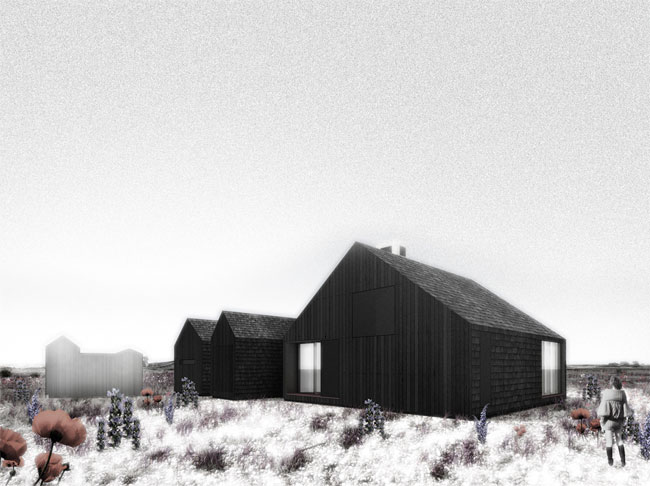
Shingle House, NORD. [Bizarre is a good word for the house too. Impossible to see this as beautiful. It’s just not.]
AdB: An architect came to us and was thinking about it with us, and we’re very taken with the idea. It’s just one of the needs of the 21st century: how do divorced couples with children holiday? [De Botton is apparently unaware that divorce existed before the 21st century–since the beginning of time, actually.] We’re not at a concrete stage, but it’s an idea that intrigues us and that we see as typical of how we might go in the future—stretching the boundaries of who’s holidaying and how. [Modernist architecture alone can soothe the pain of the broken family, even bringing estranged couples together for vacation. Is there anything Modernist architecture can’t do? Perhaps we should send de Botton to the Middle East? If only traditional architecture were this powerful.]
LC: Do you think something like Living Architecture could work in the US?
AdB: It depends on the part of the US you’re talking about. On the West Coast or down in some of the southern states, there’s a kind of routine acceptance of modern architecture. [Not New York City or Chicago? Can’t explain this one.] That said, there does remain the point that, on the whole, good domestic architecture is for the very few. Staying in a Frank Gehry house is the privilege that belongs to one or two movie moguls. [Let that privilege remain for the voluntary few!]
+ + +
I’ll pass on a vacation in Botton-land. Look for me in the Cotswolds.
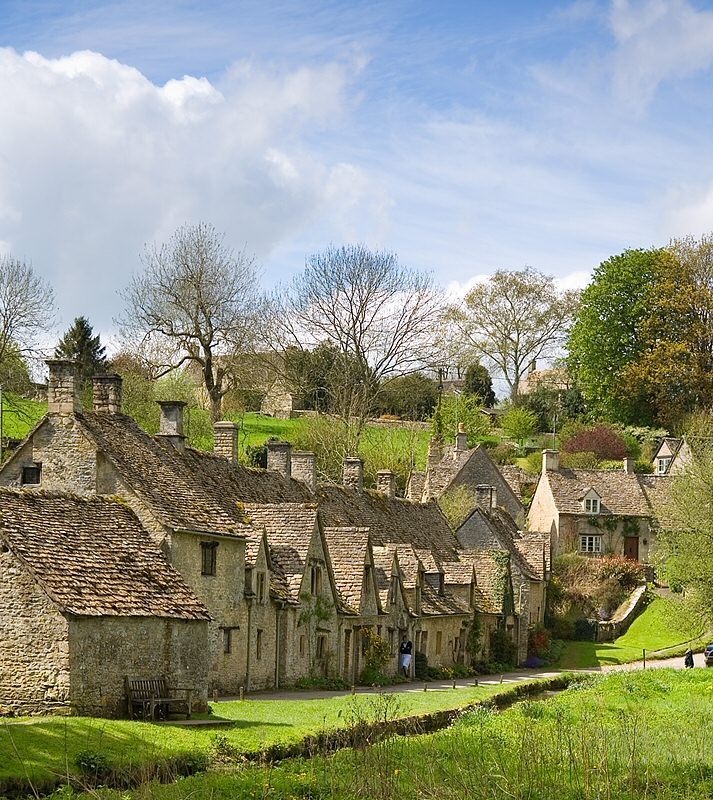
Arlington Row, Bibury.
(Image source)
This is Arlington Row, Bibury, described by William Morris as the most beautiful village in England. It was built in 1380 as a monastic wool store and converted into a row of weavers’ cottages in the 17th century. The plumbing is 21st century. Here we can truly learn lessons on how to build a place that merits being called home.


![Secular Retreat, Peter Zumthor [Is this sub-standard model not missing a glass wall or two? Many architects continue to convince themselves that the glass wall "disappears." In fact, few features draw more attention to themselves than the glass wall. A tranquil monastery is the furthest thing from my mind looking at this.]](https://www.marcantonioarchitects.com/blog/wp-content/uploads/2010/07/SecularRetreat-650x288.jpg)
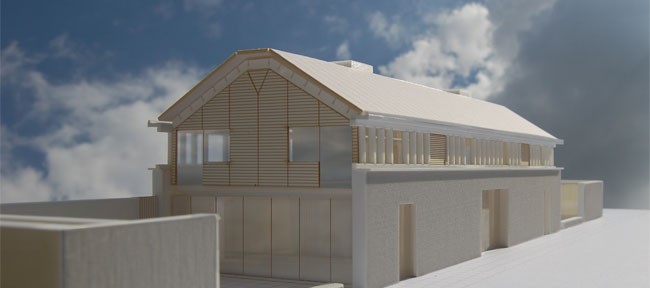
![Dune House, JVA. [Does this look cozy or particularly communal to you? I rather think impractical, anti-social, and ugly]](https://www.marcantonioarchitects.com/blog/wp-content/uploads/2010/07/DuneHouse-650x288.jpg)
![Shingle House, NORD. [Bizarre is a good word for the house too. Impossible to see this as beautiful. It's just not.]](https://www.marcantonioarchitects.com/blog/wp-content/uploads/2010/07/ShingleHouse-650x288.jpg)
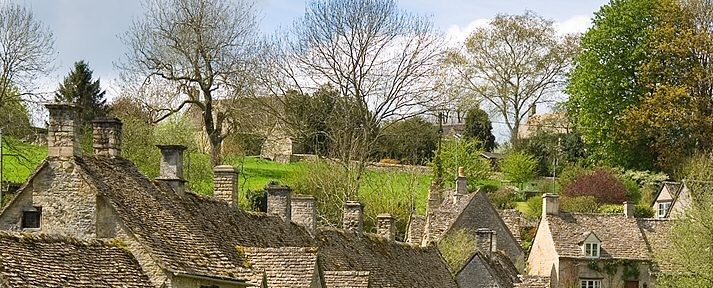
![Balancing Bar, MVRDV [Little girl placed precisely where she will surely never be found--a most unpleasant place to be. Deadly rendering.]](https://www.marcantonioarchitects.com/blog/wp-content/uploads/2010/07/BalancingBarn.jpg.scaled.500.jpg)
I enjoyed reading this Dino… nice job calling out his inaccuracies, fallacies, and downright absurdities.Best,Chad
Thanks, not sure how folks on the opposite ends sleep at night. I’d give the Long House a chance at least the 2nd level and roof. Looks like you could put an eye out in the interior of the Dune House.